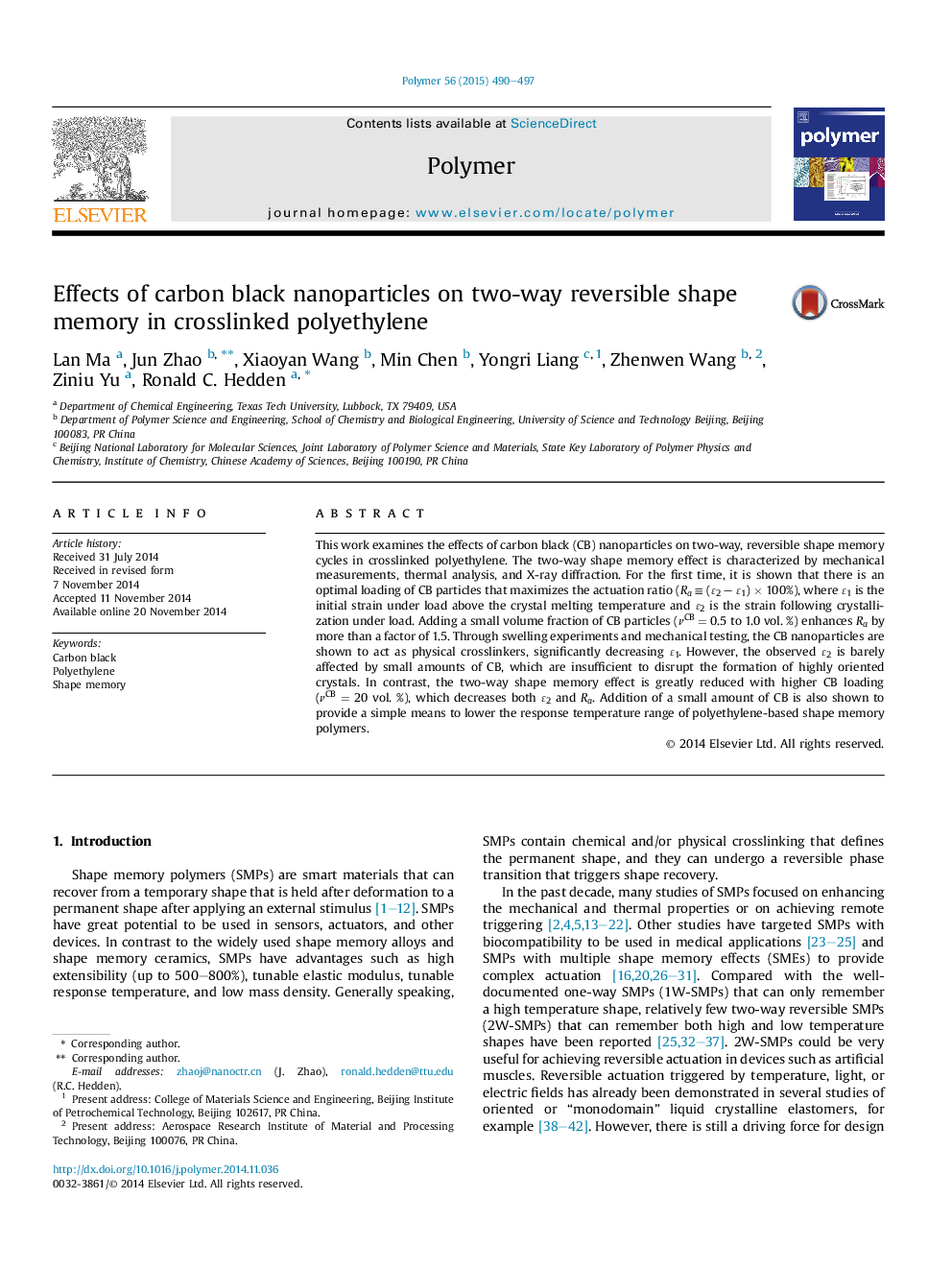| Article ID | Journal | Published Year | Pages | File Type |
|---|---|---|---|---|
| 5180632 | Polymer | 2015 | 8 Pages |
This work examines the effects of carbon black (CB) nanoparticles on two-way, reversible shape memory cycles in crosslinked polyethylene. The two-way shape memory effect is characterized by mechanical measurements, thermal analysis, and X-ray diffraction. For the first time, it is shown that there is an optimal loading of CB particles that maximizes the actuation ratio (Ra â¡Â (É2 - É1) Ã 100%), where É1 is the initial strain under load above the crystal melting temperature and É2 is the strain following crystallization under load. Adding a small volume fraction of CB particles (νCB = 0.5 to 1.0 vol. %) enhances Ra by more than a factor of 1.5. Through swelling experiments and mechanical testing, the CB nanoparticles are shown to act as physical crosslinkers, significantly decreasing É1. However, the observed É2 is barely affected by small amounts of CB, which are insufficient to disrupt the formation of highly oriented crystals. In contrast, the two-way shape memory effect is greatly reduced with higher CB loading (νCB = 20 vol. %), which decreases both É2 and Ra. Addition of a small amount of CB is also shown to provide a simple means to lower the response temperature range of polyethylene-based shape memory polymers.
Graphical abstractDownload full-size image
